Many in the fashion sector are determined to do better for the environment. The future of materials presents a major opportunity on this frontier – creating fabrics that can be produced without using the dyes or chemicals that pollute waterways. It’s also about crafting clothes that are hardy enough to go the distance and remain objects of value season after season – instead of contributing to the tonnes of textile waste that end up in landfills every year.
1.
Ventile
Developed in Manchester during the Second World War to keep pilots warm and dry if they ended up in the sea, Ventile is an admittedly vintage innovation – indeed, it was used in outerwear worn by the first climbers to scale Everest. Yet the hardy waterproof material is now remaking the world of wet-weather gear. In 2017, Swiss textile firm Stotz & Co acquired the Ventile brand, giving it a new lease of life. The material is enjoying a stylish renaissance: it’s now more commonly found on the catwalk than in combat situations.
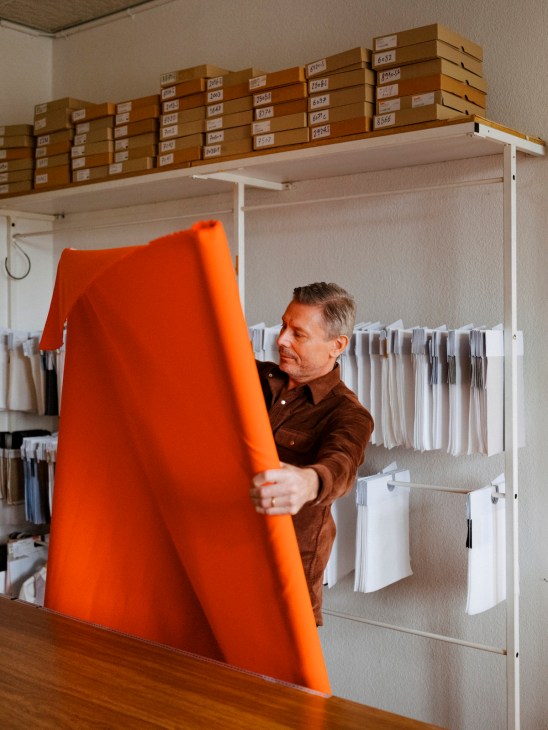
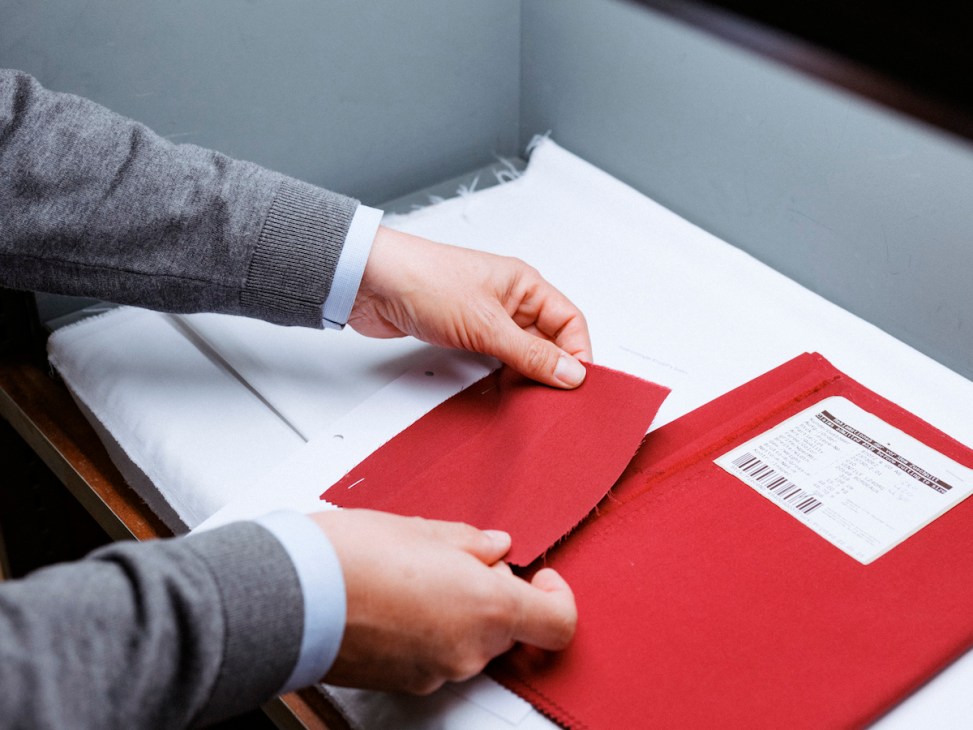
According to Daniel Odermatt, Stotz & Co’s brand director, Ventile’s big sell is that it is waterproof without relying on harmful “forever chemicals”, or PFAs. Woven from long-staple organic cotton, its fibres pull tightly together when it comes into contact with water, keeping moisture out. Though polluting, PFAs were historically the industry standard and were used in a wide range of waterproof outdoor clothing, including in popular materials such as Gore-tex. Now, though, the tide is turning: in the past year, several US states have banned their use in consumer goods and the EU has signalled plans to roll out similar measures. Brands are looking for alternatives.
As a result, demand for Ventile has soared in recent years, says Odermatt from his office overlooking the Limmat river in Zürich. “In 2023, Stone Island wanted a technical fabric in all-natural fibres. So it came to us.”
While Ventile is still used for limited runs of British and Swedish military immersion suits, the order book is now dominated by fashion brands. Lemaire, CP Company, A Kind of Guise and Loewe have all featured the material in their recent outerwear collections.
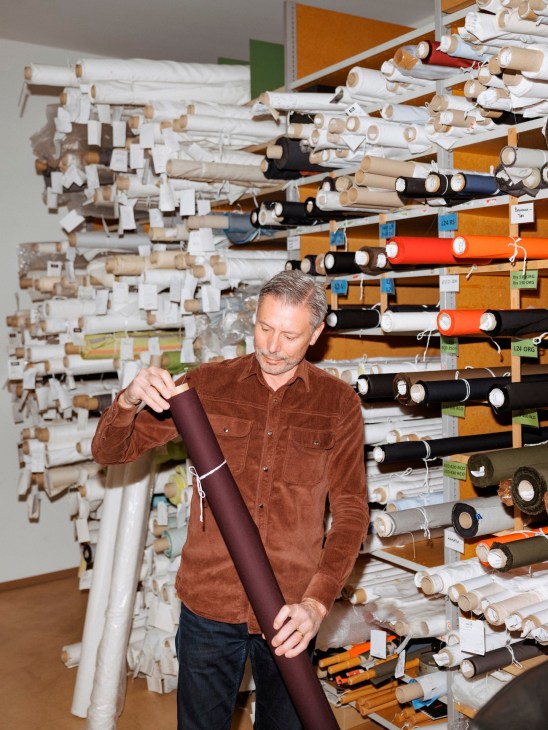
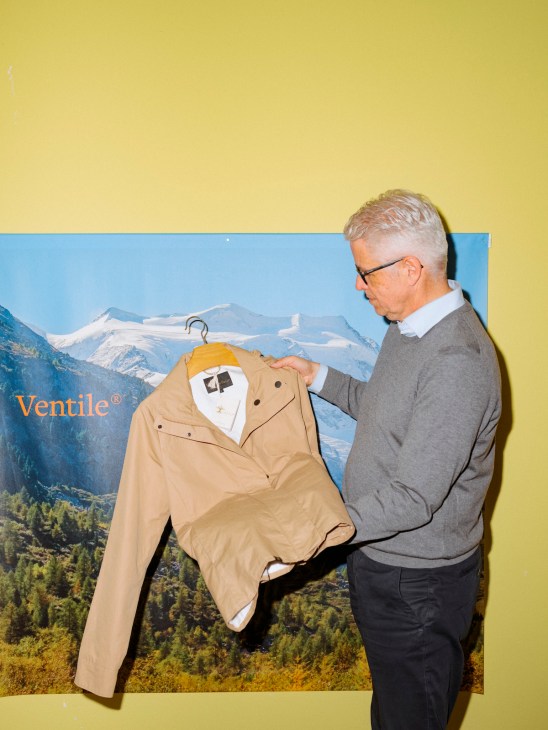
Though a mid-20th-century invention, Ventile still seems surprisingly ahead of the curve. To demonstrate its waterproofing credentials, Odermatt shows monocle two large containers stacked on top of each other; the one above is full of water, while the one below is empty. A sliver of Ventile fabric separates the two. “The fibre swells roughly 10 per cent so it gets waterproof,” he says. Though the material creates an effective barrier for water droplets, it also offers an impressive degree of breathability. Odermatt pumps air into the bottom container and Monocle watches as bubbles pass up through the Ventile and into the water above.
There’s still a big hurdle for many brands, says Odermatt: the cost. The process of making Ventile involves the use of expensive cotton and a laborious manufacturing timeline that includes weaving in northern Italy and dyeing in northern Bavaria. Odermatt says that he would consider some Asian manufacturing further down the line.
For now, however, Ventile is a proudly European product. “We are the benchmark,” says Odermatt. The transformation of its fortunes is indicative of European fashion brands’ restless search for materials that can give them an edge over the competition.
2.
Cozterra
Developed by Singaporean materials company Xinterra, Cozterra is a fabric treatment that sequesters carbon dioxide from the air. Twenty T-shirts embedded with Cozterra can capture the same amount of carbon dioxide as a mature tree in a single day; the carbon is then converted into a harmless substance when the tops are washed. Clients include Singaporean activewear label Zoda and Brazilian clothing brand Malwee.
cozterra.com
3.
Eco Nasi
Made in Kenya from pineapple waste, Eco Nasi is a sustainable alternative to leather that has the look and feel of the real thing without the need for water-intensive, carbon-emitting treatments. Founded by Kenyan entrepreneur Olivia Okinyi, the Nairobi-based company makes good use of the natural abundance of hard-wearing cellulose in pineapples.
econasi.com
4.
Solea
From Madrid-based textile innovator Pyratex, Solea is a series of cotton fabrics that offers an important upside for European buyers: every strand is traceable to its point of origin on the continent. With strict EU regulations on tracking water use and labour conditions, clients are assured that the Spanish fabrics are made from cotton grown near Seville and comply with Europe’s high standards.
pyratex.com
5.
RCO100
Catering to fashion brands including Alexander McQueen and Vivienne Westwood, Swiss company Säntis Textiles has developed a machine named RCO100 to recycle cotton waste into yarns with the durability and feel of premium virgin cotton. Cutting out the use of chemicals, fresh cotton production and the need for water, the yarn can be used for canvas, denim, twills and more.
saentis-textiles.com
6.
Desserto cactus leather
Retaining leather’s patina and strength, the humble cactus is the base for Mexican entrepreneurs Adrián López Velarde and Marte Cázarez’s vegan leather, Desserto. Thanks to the dry conditions in which cacti grow, the textile is sustainable, humidity resistant and has few inconsistencies in the grain, earning it attention from the likes of Adidas, BMW and LVMH.
desserto.com.mx
Spanning 12 palm-leaf volumes of text and illustrations, the Serat Centhini manuscript is one of the treasures of Indonesian literature. Written in the early 19th century under the supervision of the crown prince of Surakarta, it is both a story and an encyclopaedia in which characters wander the island of Java, learning about the world.
Within the pages – alongside advice on Islamic practice, how to have great sex and farming – are detailed instructions for making use of teak trees. The number of branches, the surroundings of the tree, the presence of flowers and animals making their home in its trunk all influence what the wood is best used for, be it a column in a house to bring family harmony, the frame of a mosque to bring calm or a storage chest to bring wealth.
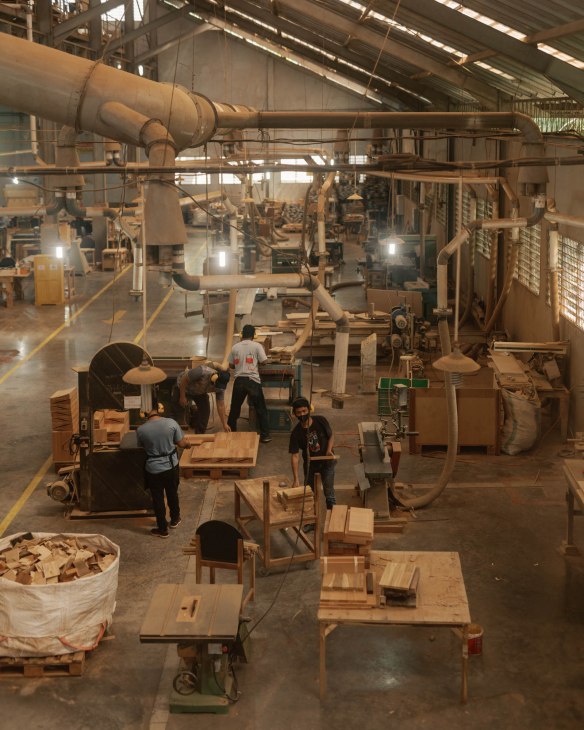
Today Indonesia is one of the world’s biggest teak producers. The timber is renowned for the beauty of its colour and grain, and the natural oil that helps to protect it from termites and the weather. These elements form the core of Philippe Delaisse’s business, Ethnicraft. All of its teak is sourced from responsibly and carefully managed forests. “The way that we win and ensure we’re competitive here is by embracing the raw materials and craftsmanship,” he says.
Enchanted by beautiful teak objects he came across while travelling in Bali in 1995, Delaisse began to export antiques and local crafts, before quickly jumping into production. He started in 1996 in Rembang, East Java, where he found skilled woodworkers willing to work with recycled teak taken from old buildings. “They used very basic tools and a lot of great craftsmen were working barefoot,” says Delaisse. From this emerged a series of beautiful teak cabinets and, piece by piece, the rest of Ethnicraft, the business that he and his business partner, Benoit Loos, have built.Trade wars and the long legacy of the coronavirus pandemic have increasingly pushed companies making products in Asia to explore manufacturing options outside China. But so far, Indonesia has struggled to get a look in: complex trade barriers, tricky labour markets and corruption meant that many companies went elsewhere.

Buffeted by the current trade war, the government is signalling reform. If it is serious, Indonesia has a lot to offer: a large and young labour force, a wealth of natural resources and pockets of deep expertise in various industries and crafts, of which woodworking is one. In a country where the previous president, Joko Widodo, built his fortune selling chairs, sofas and beds to the world, the hope is that others will follow.
Ethnicraft is showing what’s possible. Its main operations hub of some 1,600 workers is in the coastal town of Tegal. The setup here might feature high-precision machines, sturdy safety shoes and modern production lines but the dedication to material and craft remains rooted in tradition. The process always begins with the wood. Ethnicraft buyers scour government-owned teak plantations across Java for the best logs; competition is fierce, with rivals trying to poach the choice specimens. Transported and stacked in the lumber yard, each log is tagged with a QR code with which the company can trace the exact provenance of the tree down to a few metres, ensuring both sustainable sourcing and careful inventory management.

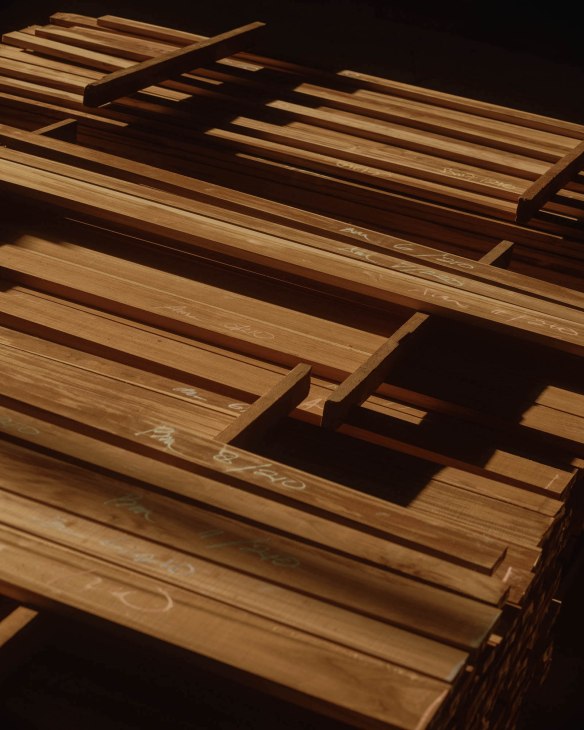
Next the logs need to cure – dry out – until they’re ready to be worked on. With teak, this is traditionally done by simply leaving the fresh lumber out in the sun for about three to four months. Once it is sawn into planks, it then dries for another month before spending a final few weeks in a vast oven. Other woods such as jackfruit and mahogany have their own timelines. The process is painstaking because the products being made demand precision. Wood “breathes”, expanding and contracting fractionally – and planks with different moisture levels will do so in their own ways. For precise work, a moisture difference of more than 1 per cent is unacceptable.
Then comes the craft. A few hundred kilometres away in Jepara, a workshop of about 600 staff produces furniture for some of Europe’s top luxury brands. Along this stretch of northern coast below the slopes of Mount Muria, woodworking skills are particularly sought after.Under a canopy of wooden beams, the process unfolds as the wood moves from turners to carvers and then to woodworkers, before being polished and varnished several times over. In their hands, simple planks, rough to the touch, are turned into exquisite tea boxes, sinuous ornaments and elegant furniture with a texture like heavy silk.
And it is very much hands doing the work. The processes here involve minimal modern technology. While a few high-precision machines have been installed, sheer skill gives the workers an uncanny exactness in their movements. At one bench Marsudi leans over an exquisite panel of wood that will become a luxury chess set. He has worked here for 24 years and the work is in his blood. “My kid also works here as a carpenter,” he says.

This tradition of generational craft is important, says Marsudi. “It helps a lot because of the skill that is needed; we’re working at a scale that is calculated down to the millimetre.” Everyone who enters the workshop must pass a rigorous test. But when such high levels of skill are required, growing up living and breathing wood helps. As we walk away, Marsudi bends over a gameboard that he is shaping. “He’s supposed to be a supervisor,” says Delaisse wryly. “But he just can’t stay away from doing some of the work himself.”
This ingrained culture and the pool of expert labour that it sustains is attracting many brands to manufacture furniture in Indonesia. Despite a rocky few years in the global economy, the furniture industry remains strong. International and local entrepreneurs and businesses alike jostle for production capacity. This includes Giovanni Gallizio, who operates another furniture factory in Jepara, producing to order for clients globally. “The manual dexterity and skill of the people here is outstanding,” he says. “There are few places in the world that have anything similar.”
China and Vietnam have reputations for being more efficient, says Gallizio, and that attracts many producers focusing on the low to middle end of the market. But he thinks that few manufacturers there possess the skills to match the sort of high-end work that can be produced in Indonesia’s teak heartlands. While Jepara is the zenith, skilled workers are present across Java. Back in Tegal, Delaisse’s other factory hums with activity: not just a world of sawdust, glues and varnishes but also one of metalworking, glass staining, stucco spreading and upholstery. “I’ve worked across the world and I’ve never seen a factory like this before,” says Steve Hauters, general factory manager, with a touch of pride.
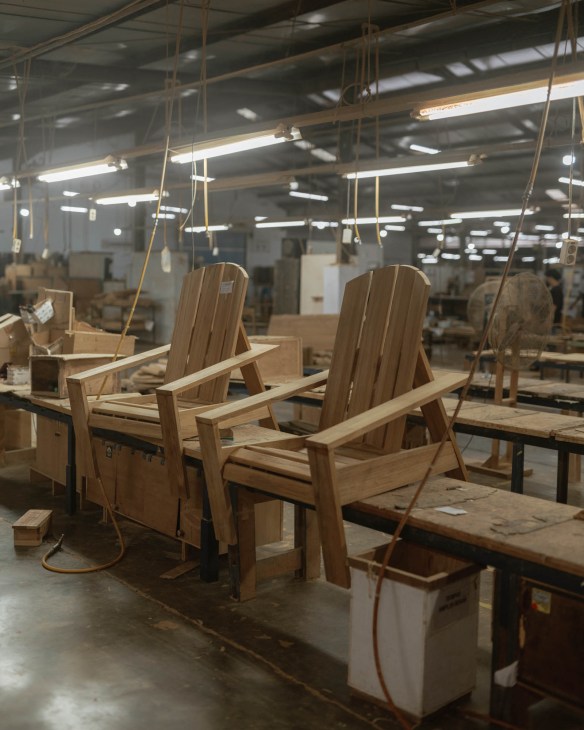
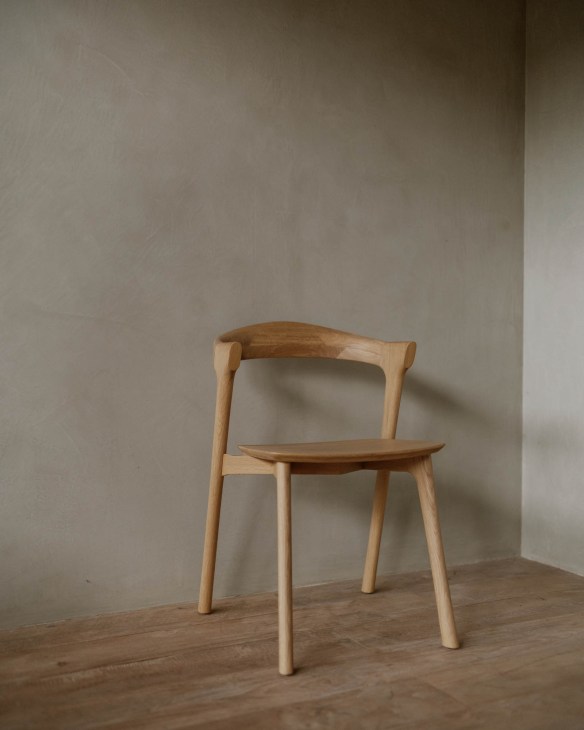
The quest to ensure quality at every stage means that as the product line has evolved – from elegant chairs in plain wood to minimalist modular sofas and elaborately patterned trays – the number of processes performed in house has grown too. From planks to pillowcases to packaging, everything is checked and rechecked at 65 quality-control stations. Such practices fly in the face of much received wisdom about how to do business: in the name of efficiency, the usual advice is to specialise. But Delaisse says that his philosophy is that the product is everything, ahead of concerns about efficiency or marketing. “If you have an interesting product, do not spend too many resources on sales. The world is a very big place. Customers will find you.”
Other companies might come to discover the virtues of doing more in-house too. “I think futurewise, a vertically integrated brand is very valuable,” Delaisse says. Control over the process gives a wealth of data to analyse. And, in a world where fashion trends move fast, it lets companies experiment with greater ease.
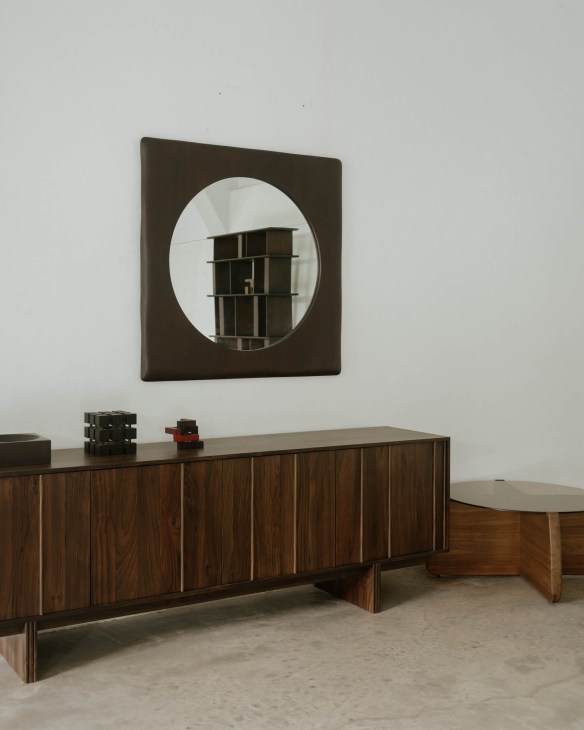
The restless experimentation continues. In Tegal production of a new line of Morpho furniture for the music festival Tomorrowland is taking full advantage of the factory’s ability to combine wood, fabrics and metals in elegant designs. Back in Jepara, the firm has a new factory producing micro-cement. Spread it over foam and fibre glass, and you get a smoothly attractive and deceptively light stone-like slab that’s perfect for tabletops.
Still, the older traditions remain. Decorative woodcarving – one of Java’s most appealing arts that adds grace notes to mundane objects such as doors, window shutters and benches – is seen throughout the Jepara workshop. A coffee table is chiselled with irregular lines that ripple before the eye. Exquisitely patterned cabinets are making a splash in the Chinese market. And a series of elegant one-off pieces, each unique in its design and patterning, waits quietly for the right customer to find them.
This article originally appeared in the Opportunity Edition newspaper 2025, created in collaboration with UBS for its Asian Investment Conference in Hong Kong.


